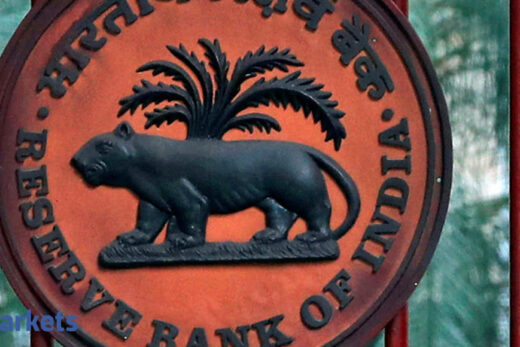When we last spoke, Nifty was at 5,800; today at 18,000, a lot has changed. We are still in the midst of the Covid pandemic. While we have done great from the pandemic lows over the last two odd months, the flows to India have faltered a little bit and some flow has shifted to China. Are there non-fundamental reasons to believe that there is going to be a sustained bid for Indian equities in the foreseeable future?
The answer is clearly yes. Before we look forward, let us look back again and go back to March 2011 period as a benchmark. Since then, the S&P has outperformed the Nifty in local currency terms and in dollar adjusted terms, even more so. The Nikkei had probably surprised the people at that time after having gone through a big earthquake, 10 years later it is up about 3X. So, yes the market has done very well over the past decade but most of that performance has come just in three years 2014, 2017 and then 2021 is one of those years. So relative to the expectation from about a decade ago, I would say that the Indian market has done very well but it probably has undershot the expectations I had at the time.
That is not a cause for dismay. It is a great thing because we are allocating capital to these markets today and when we focus on the next 10 years, it means that there are more returns in-store for the Indian market. Now why do I talk about multi-year horizons? A) Because that is the horizon on which our firm invests, but also B) it is impossible to predict when these big performance years will come.
We could have another year in 2022 that is just as good if not better than this year. Or it could be a down year relative to 2021. But the point is that the Indian market is one that is best seen on a multi-year horizon. So picking and choosing which year or quarter is difficult and timing the entry and exit from the Indian market, based on flows in and out of China or some other reason, is difficult.
But on a long-term horizon, it is very exciting because the purchasing power, investing power increases, participation in the market increases and almost 200 companies will list in the next two to three years and these are going to be sizable listings and sizable capital raisings. They could in aggregate add between $300-500 billion worth of market cap to the Indian market. So the market cap will be well over $4 trillion in just a few years. Those are some of the non-fundamental reasons to be very excited about.
Do you think it would perhaps be prudent to bring down return expectations for India and maybe say that the best in the near term may be behind us with the performance that we have had in the last 18 months?
I would probably say yes. If we look at how the market has done from not just the March lows but let us say June, July, August of last year, there were several points along the way where one could have said that about the market as a whole and in aggregate about certain sectors like IT services, hospital services, some parts of the automotive supply chain or the consumer names. But they continue to grow. Now we think that what is most important to your perspective returns is the time horizon and also the price that you pay. So yes, it is worth revisiting but if one is not long something today, what one should ask oneself is if one already owns it, would he be open to selling it today? If the answer is yes, then I should not be buying. But if the answer is no, then it is the same as buying today and that is the exercise we go through with every one of our names every day.
Given the India context, how should one map risk versus volatility? Is there reason to look for places to hide?
Up till now, I have answered yes to every question but the answer to this one is “no.” If you are afraid of the short term horizon, then I think yes you might want to hide some of your exposure and reduce your exposure substantially, but the opportunities in India are broad and deep. There are plenty of opportunities for relative and absolute outperformance even at these levels and there are multiple sectors where we can talk about that being possible.
Since you do believe that you know there is still plenty of opportunity, let us talk about IT first. Would you say the best is behind us or does it still have legs to go?
We have been positioned in that sector since early last year and it has done well for us. I think the easy gains from reratings has probably happened in multiple companies. We have seen an upward shift along the PE curve of every company in that space and what has not changed really is the earnings expectations compared to this time last year, compared to just before Covid at the start of 2020. Those remain substantially unchanged.
If these companies can demonstrate earnings delivery or earnings acceleration on a one to two year view, then we will see the stocks continue to go higher and there could be some scope for rerating in each one for those reasons. Managing costs is a little bit trickier but it is possible.
The world has now discovered the BNPL model and so has India. Buy now pay later is becoming a fast emerging trend. Will the Indian NBFCs and companies be able to cash in on this beyond the big boys like Bajaj Finance, Bajaj Finserv?
I think this is a part of a broader conversation on the marketisation of finance and we can talk about other asset classes, related asset classes later. So again I would say that it is possible for multiple companies to emerge when it is here. What will be important though is the ability of these companies to generate profitable revenue growth and to lay other services upon the user base that they are getting. These days, if you are in the right theme, if you have the right capital behind you, you can grab the users and the revenues in the short to intermediate term. But growing profitably beyond that is going to be a challenge.
As we invest in private companies, we do see a lot of promising ones that are not yet public but could become large companies in due course.
What is a better way to play the EV disruption in India? Is it via two-wheelers, ancillaries or passenger vehicles?
Let us start with the biggest vehicles — commercial vehicles first. There is an entire supply chain that is domestic within India all the way from the trucks to the components and these will be listed. It is worth investing there because we have seen a stagnation in CV demand for good reasons whether it is the slowdown in the economy or Covid.
The previous peak of three-four years ago will be taken out at some point now. Whether it will be two years from now or four years from now I am not quite sure, but that is not reflected in the equities prices of companies that have exposure to that sector. So I would say spend time on commercial vehicles and passenger vehicles. It is a unique market given the market share dynamics of one company relative to others and the PV story will come back just like the CV cycle.
What is more interesting and where there seems to be more debate is what happens to the two- wheelers. I myself am a car person and I do not look very cool on a motorcycle or a scooter. But I think a lot of excitement is going to be seen in this space. It is yet to come and relative to commercial vehicles and four-wheeler passenger vehicles, the most disruption and the most rapid share shifts seem to me to be looming in the two-wheeler sector. The opportunities in the listed companies in the two-wheeler space are going to expand within the next 12 to 24 months. That is where the debate is and given that we look at private companies, that is where I am gathering a lot of intelligent information to be a little bit more cautious on the two-wheelers that are already listed.



